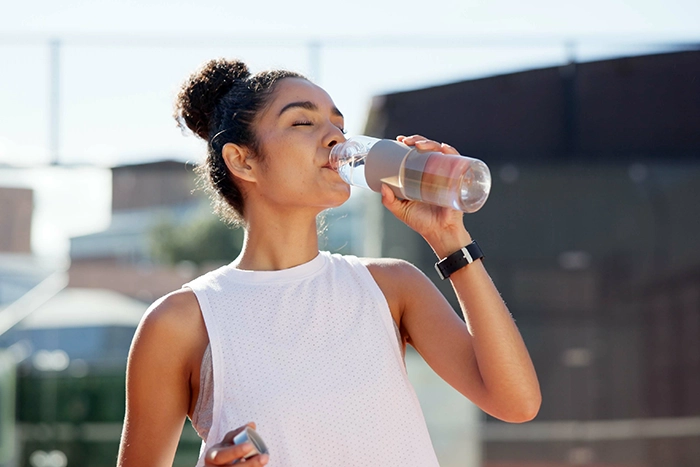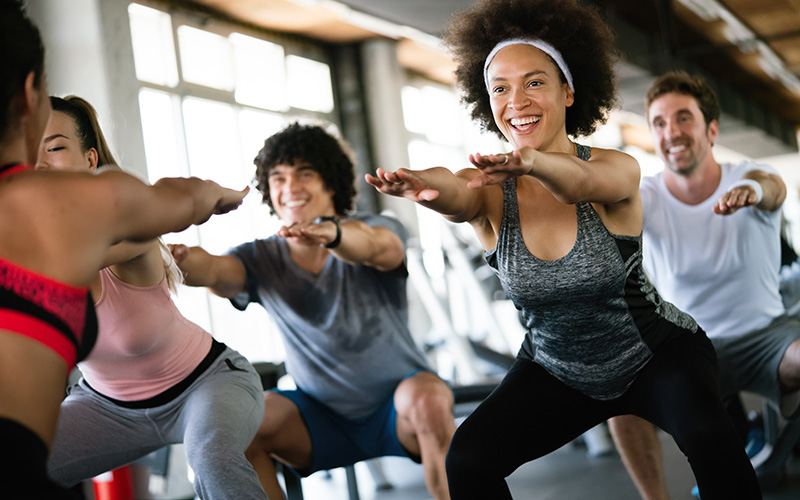There are more ways to stay hydrated than just drinking water if you want to keep on top of your hydration. As summer temperatures rise, your body works harder to keep cool. Boost your body’s hydration with these hydration hacks that help you tackle the season.
Why Hydrate?
Our body needs water to function properly. Having enough hydration also cools you down when you’re experiencing hot weather. However, apart from temperature regulation, hydration also has many benefits for your health. Helping with good digestion and boosting energy levels are just some of them.
In summer, your body tends to lose fluids quickly because you’re sweating a lot. If you don’t replace those fluids, you may experience dehydration. With dehydration comes headaches, cramps, and maybe some worse things. Luckily, it’s easy to prevent. Your best defense against these issues is by knowing how to properly hydrate.
Hydration Hacks for the Summer
If you need a little help ensuring your hydration levels are sufficient, there are some tips you can follow. Here are some hydration hacks that can help you out
1. Make Hydration a Morning Habit
Start every day by drinking water. Since you’re sleeping for roughly six to eight hours a day, your body may be slightly dehydrated. Even before enjoying your morning beverage of choice (coffee or juice), drink one full glass of water to help restore your body’s water balance.
If you’re having a tough time forming this habit, try out these tips:
- Keep a refillable water bottle on your nightstand. It’ll be the first thing you see when you wake up.
- If you’re a fan of flavor and some nutrient support, add a squeeze of lemon or cucumber slices.
- Avoid drinking sugary juices. Instead, add fresh fruits to water if you need a flavor kick.
2. Eat Your Water
Drinking water is essential. But did you know there are foods rich in water that you can munch on instead? Adding this to your diet is another easy way to avoid dehydration.
Most water-rich foods include fresh fruits and vegetables, with many of them being composed of 90% water. On top of that hydration boost, they also provide vitamins and minerals that can help keep your body healthy.
Here are some examples of hydrating foods:
- Watermelon: about 92% water, contains antioxidants
- Cucumber: over 95% water, low in calories
- Strawberries: around 91% water, packed with vitamin C.
- Lettuce and spinach: Great for hydration, contain fibre and nutrients.
Keep a bowl of chopped fruits or vegetables in the fridge so you can grab a cool snack anytime.
3. Avoid Hidden Dehydrators
Not all fluids are hydrating. Some drinks may make you feel refreshed when you take them, but secretly dehydrate you instead. Usually, such beverages are either high in caffeine or sugar. These can increase your fluid loss, making you thirstier later on.
Some hidden dehydrators include:
- Soda and energy drinks
- Strong coffee
- Store-bought juice that contains added sweeteners
- Alcoholic drinks
4. Timing is Everything
If you want to hydrate, it’s important to stay consistent. While chugging does provide your body with a lot of water in a short amount of time, it can overwhelm your system. This may prevent your body from absorbing the water properly. Instead of chugging, sip your water in small amounts throughout the day.
Here are some timing tips to help with your hydration:
- Drink a glass of water half an hour before eating your meals.
- Always carry a bottle of water and take small sips throughout the day.
- If you’re engaging in exercise or strenuous activities, be sure to drink more water before, during, and after your activity.
5. Keep Electrolytes Balanced
When you sweat, you’re not only losing water but also electrolytes needed by the body, primarily sodium and potassium. These substances help your body retain fluids. Therefore, when replenishing your fluids, you also need to take in these electrolytes. Sweating depletes not only water but also essential electrolytes like sodium and potassium.
Natural electrolyte sources include:
- Bananas for potassium
- Dairy or fortified plant milks for calcium
- Nuts and seeds for magnesium
- Salted whole foods in moderation
If you prefer drinks, choose low-sugar options or mix your own with water, lemon juice, a pinch of salt, and honey.
However, there’s a fun and easier way to do this: making easy homemade electrolyte popsicles. Here’s an easy recipe you can follow:
Ingredients
- 1 cup coconut water
- 1/2 cup pureed watermelon or strawberries
- A pinch of sea salt
- A squeeze of lime
Directions:
- Mix your coconut water, pureed fruit, salt, and lime juice in a container. You can use one with a spout for easy handling.
- Pour your mixture carefully into popsicle molds or an ice cube tray.
- Place the molds into the freezer.
These popsicles cool you off and deliver a hydration boost simultaneously.
6. Hydration for Kids and Older Adults

Children and older adults are more at risk of becoming dehydrated, especially in hot weather. Their thirst doesn’t accurately reflect their hydration needs. In such cases, you can provide proactive support.
Here are some ways to encourage hydration for kids and older adults:
- Use colorful drinkware that can pique a kid’s interest.
- Give them frozen fruit snacks or popsicles.
- Make sure drinking water is easily accessible.
- Set hydration reminders if necessary.
7. Make Ice Cubes Work for You
Ice cubes can provide hydration support, just like some popsicles. While plain ice cubes work well, you can make things more fun and nutritious by including ingredients in them. Think of it as making your own mini popsicles in an ice tray.
Here are some great ingredients to freeze:
- Cucumber slices and mint leaves
- Watermelon cubes
- Coconut water
- Lemon juice with berries
Other than eating these, like an ice pop, you can also add these cubes to water or sparkling water. They offer a quick pick-me-up that also boosts your hydration.
8. Use Visual Cues to Track Intake
It’s easy to lose track of how much water you’ve had in a day. Instead of relying on thirst alone, you can use visual cues to stay consistent.
Here are some helpful visual strategies that you can use:
- Use a marked bottle with hourly goals
- Set phone alarms
- Track your intake with an app or planner
- Pair water breaks with daily routines like brushing your teeth or meal prep
Staying hydrated doesn’t have to be complicated. You just need a bit of planning.
9. Don’t Forget to Hydrate Before Bed

Evenings are often overlooked, but drinking a small glass of water before bed can help regulate your body overnight. After all, you won’t be drinking any fluids for the rest of the evening. This is especially helpful if you’ve had alcohol, salty food, or spent time outside.
Tips for nighttime hydration:
- Avoid large amounts right before sleep to prevent middle-of-the-night wakeups.
- Try herbal teas like chamomile if plain water isn’t appealing.
- Rehydrate after evening workouts or hot showers.
A little pre-bed hydration goes a long way in keeping you cool and comfortable until morning.
Make It a Habit
Summer brings sunshine, fun, and outdoor adventures, but staying hydrated is what helps you enjoy them all. With a few simple habits, wise choices, and fresh ingredients, you can stay cool, feel great, and keep your energy high through every heatwave.
Related Articles:
- Fun Summer Activities for the Entire Family
- Creative HOA Summer Events To Welcome New Residents
- Refreshing Summer Salads To Try This Season




